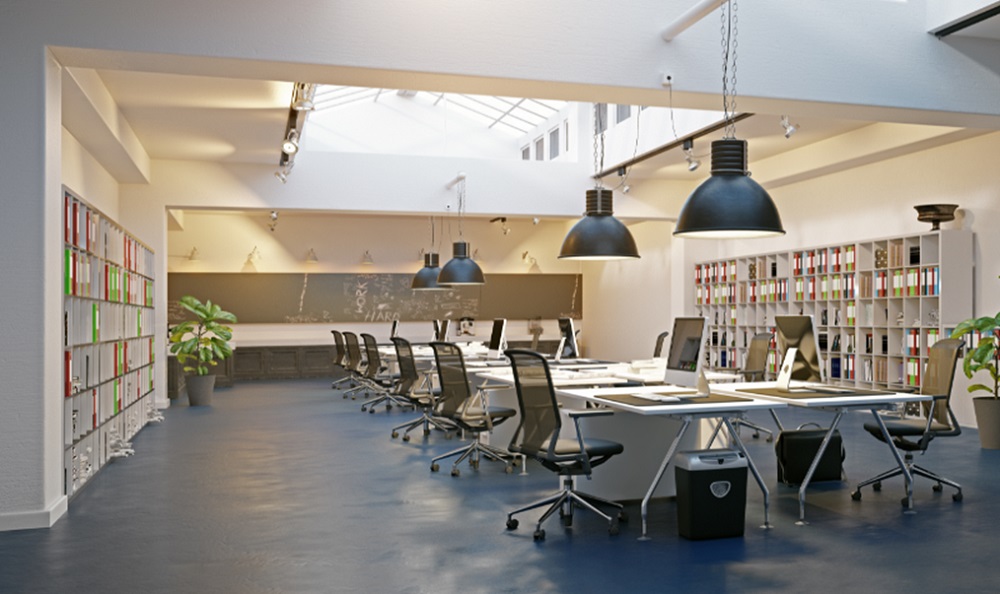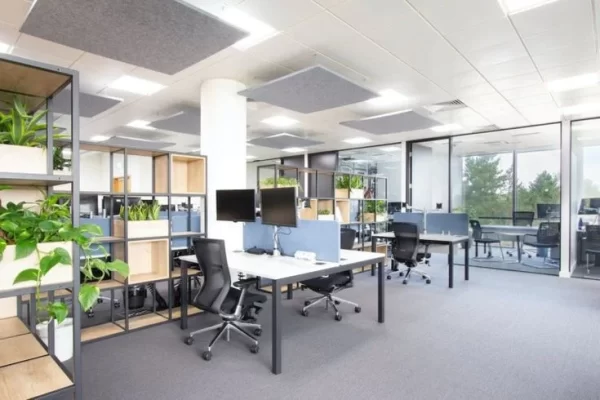
There is more to office space design than just looks. It’s about establishing a setting that improves worker wellbeing, promotes teamwork, and boosts production. But what if the ideal interior office design allowed you to accomplish all of these objectives? Here’s how to transform your workspace into a hub of efficiency and creativity.
Optimise Layout for Workflow
The layout of your office significantly impacts how work flows within the space. A well-thought-out layout can streamline processes, making it easier for employees to collaborate and complete tasks efficiently. Start by identifying the critical functions of your office and allocate space accordingly. For instance, position collaborative areas near departments that need to interact frequently, while placing quieter zones away from high-traffic areas. This approach ensures that the design of your office supports the way your team works, leading to improved productivity.
Prioritise Ergonomics
Ergonomics plays a vital role in boosting productivity. When employees are comfortable, they can focus better on their tasks. Invest in ergonomic furniture, such as adjustable chairs and desks, which support good posture and reduce the risk of musculoskeletal issues. Additionally, consider the placement of computer monitors and other equipment to ensure they’re at the correct height and distance. Incorporating ergonomics into your interior design for office spaces creates a healthier environment where employees can work efficiently without discomfort.
Harness the Power of Natural Light
Natural light is one of the most efficient tools in interior office design. It boosts mood, increases energy levels, and can even improve concentration. Arrange workstations to maximise exposure to natural light, ideally by placing desks near windows. If your office lacks sufficient natural light, consider using full-spectrum lighting that mimics daylight. This simple adjustment can have a profound effect on employee productivity and overall well-being.
Incorporate Colour Psychology
Colours have a significant impact on mood and behaviour, making them an essential consideration in interior design for office spaces. Use colours strategically to create an environment that enhances productivity. For instance, blue tones are known to promote focus and calm, while yellow can stimulate creativity and energy. However, balance is critical—avoid overwhelming the space with bold colours and instead use them as accents to support the overall design. Thoughtfully chosen colours can subtly influence employee performance and satisfaction.
Create Functional Zones
Dividing your office into functional zones can optimise the use of space and support different types of work. For example, create open-plan areas for teamwork and collaboration, while designating private spaces or quiet rooms for tasks that require concentration. Incorporate breakout areas where employees can relax and recharge, as these are essential for maintaining productivity throughout the day. By creating distinct zones, you allow your team to move between different work modes, which can enhance efficiency and reduce stress.
Integrate Technology Seamlessly
In today’s digital workplace, technology integration is critical to productivity. Ensure your office design supports the necessary technological infrastructure, such as power outlets, charging stations, and formidable Wi-Fi connectivity. Consider implementing smart technology solutions, such as automated lighting, climate control, and collaborative tools, to enhance efficiency. The key is to ensure that technology blends seamlessly into the design, allowing employees to work without disruption or frustration. A tech-friendly office design can significantly boost productivity by enabling smoother workflows and communication.
Focus on Acoustic Comfort
Noise can be a significant distraction in an office environment, leading to decreased productivity. To address this, incorporate acoustic solutions into your interior design for office spaces. Use sound-absorbing materials, such as carpets, curtains, or acoustic panels, to reduce noise levels. Additionally, consider using white noise machines or sound-masking systems in open-plan areas to create a more focused work environment. By enhancing acoustic comfort, you create a space where employees can concentrate on their work without unnecessary distractions.
Transforming your office into a productive and efficient environment doesn’t have to be complicated. By focusing on key design elements such as layout, ergonomics, natural light, and technology integration, you can create a workspace that supports your team’s success.
For more information about office interior design solutions, contact Raw Design Consultants today.

